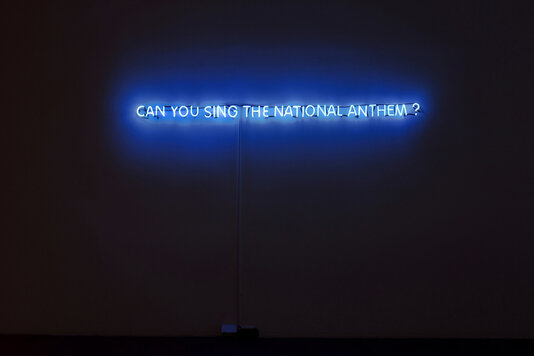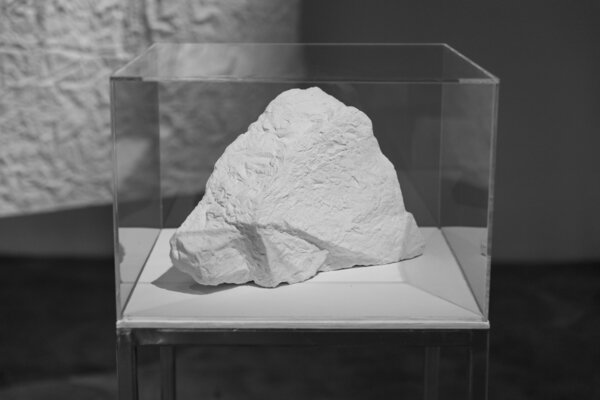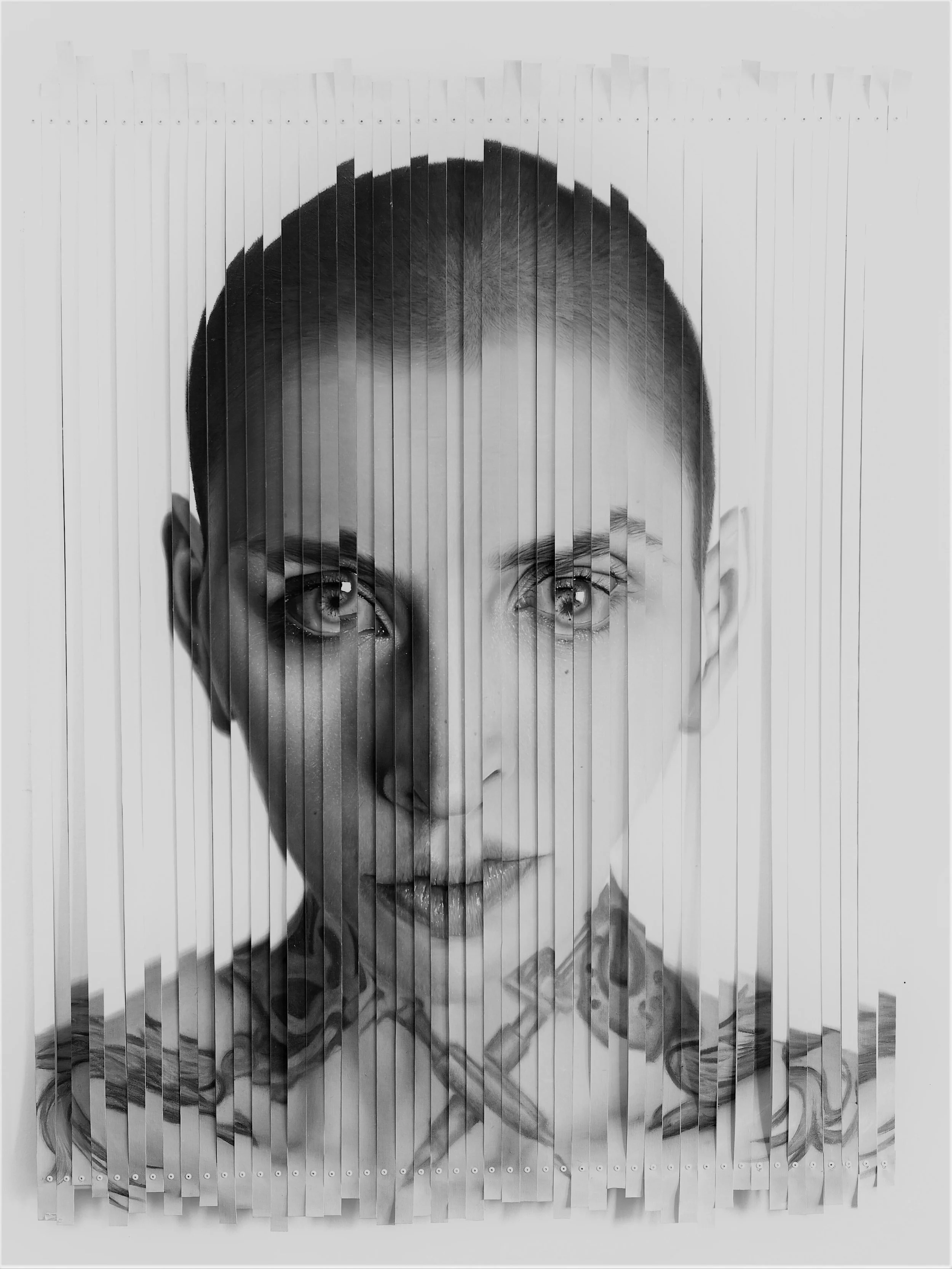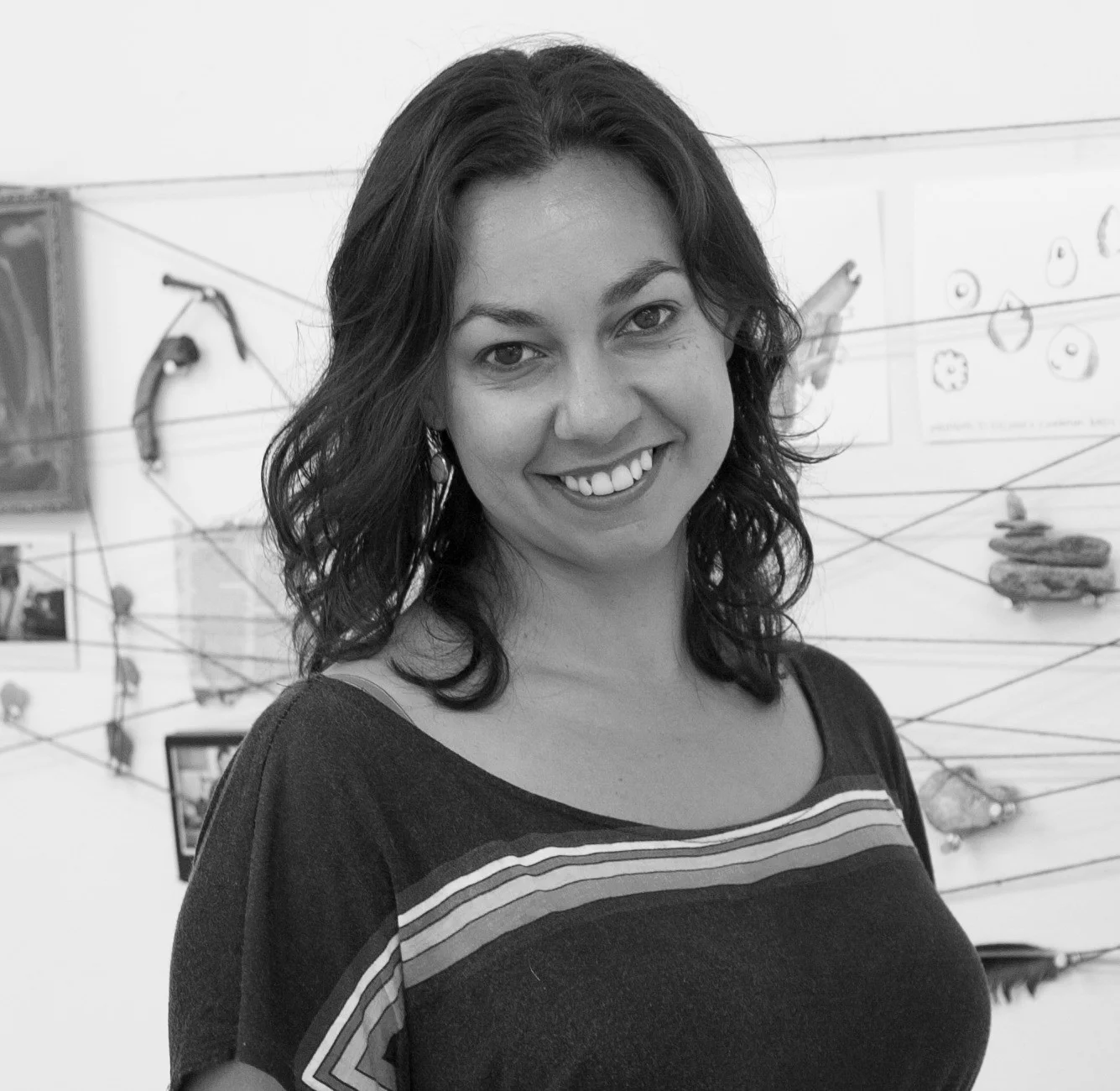PIYARAT PIYAPONGWIWAT
“Fabric” - 2017 - Image courtesy of MAIIAM Contemporary Art Museum
Piyarat Piyapongwiwat is a multidisciplinary artist working with various media. Her practice centers on documentation as a method to expose and question the conditions and implications of our globalized economy and social issues. Whether it is video, photograph, or installation, she often uses these various media not merely as a record keeping, but as an attempt to map our inter-connected world through voices of individuals.
Interview by Tyler Nesler
How do you think your upbringing and environment shaped and inspired the issues you address in your work, such as globalization and gender identity?
My work usually conveys issues from my experiences and surroundings. A conservative upbringing, the social environment, and books that I have read and people I interact with; whether or not I agree with them or can choose them, these things have implicitly shaped my perception. Being skeptical makes me inquisitive and question things. I work on various social issues because it helps me understand myself and others. We cannot live our lives without others.
While in your late twenties you left a business career in Bangkok to study art in France. When you were there, did you study with any specific mentors or at particular institutions which strongly shaped the direction of your work?
I studied for a second bachelor’s degree at Ecole Supérieure des Beaux-Arts de Montpellier Agglomération. Didier Malgor, who taught theory of art and history of ideas at that time, offered constructive critiques and helpful comments on my early work. Studying art and philosophy with Bastien Gallet also helped me to acknowledge theoretical approaches, especially poststructuralism which later on led to my broadened perspectives and questioning of existing social structures. Besides, learning is a life-long process; so when I came back to Thailand, I continue to self-learn. I am also fortunate to have known and have built friendships with great social and cultural intellectuals such as Vuth Lyno (artist, curator), Kengkij Kitirianglarp (sociology lecturer), Thasnai Sethaseree (artist, art lecturer), and many more whom I have admired — they have offered me valuable advice many times.
“Can You Sing the National Anthem?” - 2015 - image courtesy of the artist
In what ways did you view Thailand differently after your period in France? Did any particular contrasts between European and Thai culture influence your subject matter?
Let me answer in terms of political structure. Thailand is a highly centralized country; the political power, economic power, resources of the nation, and even cultures are centralized in Bangkok with the state and the capital monopolizing the power. Freedom of speech is considered an essential right in France, whereas in Thailand, freedom of speech is limited. Thailand was once the hope of democracy in Southeast Asia. However, since the recent two military coups, the country has retrogressed into authoritarianism. Thai is also a patriarchal and hierarchical society. We can’t really say we have a culture of criticism when criticizing the monarchy can result in a three to fifteen years jail time.
After my time in France, I have come to realize this strong contrast between European and Thai art cultures. Due to circumstances, Thai artists are constrained and hyper-aware when presenting certain sensitive subjects. It is disgraceful and miserable that sometimes self-censorship is unavoidable if we want to exhibit our works in the country. Otherwise, we could be at risk of being arrested and prosecuted.
You take a documentary and participatory approach to the development of your projects. How important do you think it is for an artist to gain direct experience when creating work which comments on sociopolitical issues?
In my view, if an artist works on sociopolitical issues, it is necessary to conduct a field survey to gain direct experience on the subject. I have learned that real-life situations or significant details often differ from assumptions we make in the studio. When researching or processing ideas, I study theoretical approaches; but when executing or producing work, I set aside those theories. I prefer to learn and absorb the actual experiences. Sometimes preconceived theories are inconsistent with reality. There are many things we do not know.
“Particle” - 2019 - image courtesy of the artist
Installation view - “Particle” exhibition - 2019 - image courtesy of Karin Mongkonphan
Why do you think you have taken a multidisciplinary approach with your work rather than focus on producing in one type of medium? Do you think that working with a variety of media best serves the documentary nature of your work?
Particular skills and training techniques are definitely important. Nonetheless, the bottom line is that everyone thinks differently. To my mind, I look at mediums as a tool to convey messages and ideas. I always put down ideas before committing to work on a particular medium. Taking a multidisciplinary approach and working with various types of medium means that I do not limit my scope of learning to a particular science or my scope of practice to a specific technique. This flexibility allows me to feel no limitation on what I am keen to learn and on my approach to methods of creation. However, among many different mediums that I have executed, I feel that the moving image is the medium that I am most fascinated with.
Your recent multimedia exhibit "Particle" explored the origins of urbanization and the exploitation of natural resources, with a focus on the commercial extraction of limestone. What attracted you to limestone as a basis for exploring these themes? What were some challenges you encountered when using different mediums such as video, sculpture, and painting for a single piece?
A construction boom in this developing region is driving demand for a core ingredient of cement — limestone, which is derived from natural resources, i.e. blasting limestone mountains. It results in destruction of the fragile ecosystem and also affect livelihoods of people living in communities around the mountains. This is why I choose limestone as a center of the themes.
In designing the project “Particle,” I wanted to produce an experimental work that has a mixture of documentary, cinematography and artistry. This makes it a very zestful yet challenging project. The video installation is a merging of a documentary about the effect of extractive capitalism on a community in Cambodia; blending into a fictional narrative of an anonymous man in a fictive realm.
For the painting and sculptures, I made them with construction materials commonly used in our modern world. I reused some cement packagings by sewing them into a large piece of canvas instead of using new fabric; then painted with some materials and acrylic colors which are used in the construction industry. Creating the sculptures was a very challenging experiment. I wanted to make sculptures that are solid yet fragile at the same time; using quicklime, the material that appears in the video work, as the main ingredient. The process was arduous. As far as I know, no one has ever used quicklime to make sculpture because of its nonadhesive characteristic. Quicklime is produced by heating crushed limestone to a high temperature in a kiln. The thermal composition process will release carbon dioxide and rid the material of its adhesive property. Quicklime is used in various industries as well as a compound in cement manufacturing. Fortunately, I have a great team of assistants who worked alongside me experimenting with numerous processes and formulas until we achieved the white sculptures that appear solid and heavy yet as fragile as I had imagined.
“Reconstructed No.2” - 2019 - image courtesy of Karin Mongkonphan
“Reconstructed No. 3” - 2019 - image courtesy of Karin Mongkonphan
Exhibition view - “Particle” exhibition - 2019 - image courtesy of Karin Mongkonphan
In your 2017 project "Fabric," you addressed issues of migration and labor in the textile manufacturing industry. You created collaborative artworks with laborers in Southeast Asian facilities. What were some aspects of these collaborations which surprised you or added extra dimensions to the project that you hadn't anticipated?
In this project, I collaborated with many local garment and textile workers from different countries in Southeast Asia, a major destination where global clothing brands are outsourcing their manufacturing operations. This is an exploitative industry with very low wages in precarious working conditions. The workers are treated as cheap unskilled laborers — mere inputs to the massive industrial operation where their human creativity is not needed.
In the production process, I asked them to create colorful patchwork textiles by using remnants of clothes from garment factories I had previously gathered from each site in Southeast Asian countries. I only gave them the required size of the outputs without giving them detailed instruction nor directing any aspects. I wanted them to use their imaginations and show their creative skills. The result was gratifying. I was very impressed, even surprised, by many pieces of the patchwork textiles they created. Many of them reflected that they were enjoying the process very much. The result is a testament of these workers’ creativity.
“Fabric” - 2017 - Image courtesy of MAIIAM Contemporary Art Museum
“Fabric” - 2017 - Image courtesy of MAIIAM Contemporary Art Museum
What is coming up for you in the near future? Any new projects or shows that you would like people to know about?
I had actually begun research on a specific topic. However, conditions from the ongoing coronavirus pandemic halted this research. Measures implemented by governments around the world in response to the pandemic, such as city lockdowns, stay-at-home orders, declaring state emergency situations/laws — it is interesting to see that the situation has shed light on many critical problems of human society such as inequality, consequences of capitalism, and abuses of state power. Thus for now I would like to take the time to step back a little, observe the unfolding situation, perhaps take stock of my past works and rethink my next steps.
View more of Piyarat’s work on her site and Instagram
You might also like our interviews with these artists:
Tyler Nesler is a New York City-based freelance writer and the Founder and Managing Editor of INTERLOCUTOR Magazine.
Additional contributions by Uzomah Ugwu














